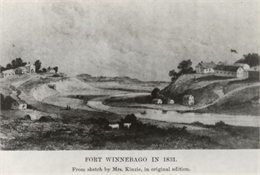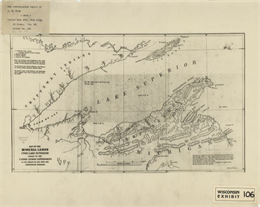Native American Treatment in Citizen Petitions
Wisconsin Citizen Petition Exhibit
Present day Wisconsin is home to 12 federally recognized American Indian Nations: Bad River Band of Lake Superior Chippewa, Brothertown Nation, Forest County Potawatomi, Ho-Chunk Nation, Lac Courte Oreilles Band of Lake Superior Chippewa, Lac Du Flambeau Band of Lake Superior Chippewa, Menominee Indian Tribe of Wisconsin, Oneida Nation, Red Cliff Band of Lake Superior Chippewa, Sokaogon Chippewa Community, St. Croix Chippewa Indians of Wisconsin, and Stockbridge-Munsee Community Band of Mohican Indians. Wisconsin is the ancestral land for these tribes, and others that were forcibly removed by white settlement.
The citizen petition collections offers are glimpse into the treatment of these tribes as settlement in Wisconsin grew. The petitions in this collection show they ways ative Americans and white settlers tried to use government channels to protect their communities.
The War of 1812 brought permanent military forts to Wisconsin: Fort Howard at Green Bay, Fort Winnebago near Portage, and Fort Crawford at Prairie du Chien. These military forts brought additional white settlement and with it, a territorial government.

Fort Winnebago
Fort Winnebago, a print published in Mrs. John H. Kinzie's Wau-bun (1856). View the original source document: WHI 42848
Soldiers and officials stationed at these forts administered government and protected commerce, negotiated treaties with American Indian Nations, and constructed Wisconsin's military roads.
As the number of settlers increased following the removal of Native Americans residents of the territory petitioned to organize counties. In 1839, residents asked for the creation of St. Croix County.
White settlers’ demand for land grew and treaties pushed Wisconsin Native Americans from their land, white settlers from St. Croix, Washington, Milwaukee, Polk, and Crawford Counties contacted the legislature to take what they saw as appropriate military action enforcing the laws. White petitioners did not hesitate in threatening violence against Wisconsin Indians if the legislature did not pursue an immediate course of action.

Map of the Mineral Lands
Map of the Mineral Lands Upon Lake Superior Ceded to the United States by the Treaty of 1842 With the Chippeway Indians View the original source document: WHI 116582
Citizens also encouranged the Territorial Goverment to influence the Congress, residents of Milwaukee County hoped the state legislature would urge Congress to ratify a treaty with the "Dakota Indians" to remove the tribe beyond the Mississippi River. Petitioner's claimed such action would benefit both the Territory and members of the Dakota.
Petitions to remove Native American's from land occupied by white settlers were common, residents of Black River asked for removal of the "Chippeway Indians" from settled lands and residents of Polk County asked for removal of all Native Americans from the County.
Throughout the nineteenth century, men and women of Indian heritage petitioned the legislature for issues that mattered to them as individuals as well as larger groups. Between 1838-1841, members of the Brothertown tribe petitioned for citizenship and ownership of their land. Men self-described as Indian and men of mixed Indian-white heritage demanded the expansion of suffrage rights. Some tribes took on wider social causes such as alcoholism and prohibitive liquor laws. Several Indian women with white husbands petitioned the legislature for divorces, citing the difficulty of living in white communities, while men of mixed Sioux-white heritage also petitioned the legislature for laws governing the division of their lands.
